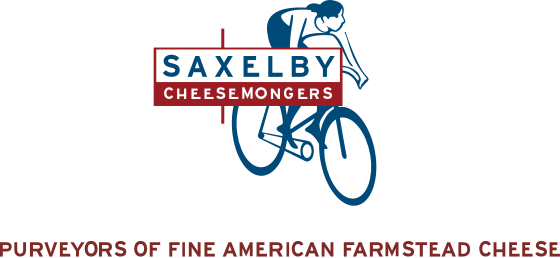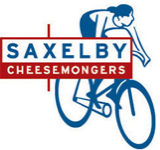What does it take to make great cheese? We caught up with Nat Bacon, Jasper Hill Farm's 'Director of Quality' (and one of their most senior cheesemakers), in the summer of 2020 to learn about his work as a cheesemaker and his philosophy on curds and whey. Nat has been making cheese for 12 years, and before that spent 8 years on a dairy farm milking cows. Nat never gets bored at work - he sees his life's work as a cheesemaker following milk on its journey to become the best, most interesting cheese it can be.
Q: What does an average day in the creamery look like for you?
A: The ethos of dairy farming is that you're always trying to cram 48 hours worth of work into a 24 hour day. Many dairy farmers start their day at 3am or 4am milking cows, and are not finished with evening chores until 7pm. So in a nutshell, because the farmers start early, we start early. Our cheesemaking day at Jasper Hill Farm starts at 2:30am. We have to get the room ready for making cheese - making sure everything is cleaned, sanitized and ready to go. We then pump milk in from the bulk tank that was stored from the previous night's milking and begin the cheesemaking process. We're usually finished around 2:30pm, however there's another round of work to be done around 8-9pm to turn the new wheels of cheese, so the days of a cheesemaker are more like a cycle of labor that blends together day in and day out. We're lucky that we have two shifts of cheesemakers in the morning and a third pair of hands to do the turning at night.
Q: You've said that Jasper Hill's way of making cheese is 'the opposite of efficiency'. Could you explain that?
A: We believe that making great cheese means relying on the quality of your milk to develop flavor in the finished cheese. For us that means using very small amounts of starter culture and letting the milk ripen slowly over a longer period of time in order to let the naturally present cultures in the milk express themselves. Our mission at Jasper Hill is to create 'A Taste of Place', so we have to be patient and allow for that natural development to happen, both in the creamery and then later on in the aging process in the Cellars.
Q: What does your title 'Director of Quality' Mean?
A: I now spend about half of my time in the creamery making cheese and the other half in the Cellars, working with the affinage, sensory, and sales teams to make sure the cheese is on the right track. In essence, I follow the cheese from its inception to when it's ripe and ready to leave the cave. Since there are so many factors that can affect the quality of cheese - from the animals' care and forage to the conditions in the creamery and how the milk acidifies with each batch to the aging and affinage process, I'm the person that tries to link all of those things together and communicate with our teams to make sure we're addressing issues as they come up and all working together to make and care for the cheese as a team.
Q: What is the best part about being a cheesemaker?
A: Making cheese requires a lot of physical work, but it also requires a lot of brain work, so it's an interesting duality. You do have to get up early, but you also get to see the sunrise coming over the mountains from the creamery. Being a dairy farmer and cheesemaker, you also feel that you're connected to the cycles of nature and agriculture in a way that humans have been for over 8,000 years. There's something very animalistic about going out into a cold morning and interacting with these huge, warm animals, leaning your head against their sides to milk them, and then taking that milk and turning it into cheese. At the end of each day, that's probably the most satisfying thing - there's a sense of pride in knowing that you've made something tangible and real.
Q: What is the hardest part about being a cheesemaker?
A: Cheesemaking can be very unromantic at times. Case in point - the other day I was in the creamery at 5am washing dishes for three hours. However, this kind of work can also be calming and therapeutic. I'm an introvert, so sometimes I like to take a break from managing people and get into a physical task. The repetitive nature of the work can be difficult, but to me is also grounding. One of the hardest things of all is making the decision to toss a batch of cheese. If you've put all the work into making and aging a cheese and for whatever reason it's not salable at the end of the day, it really hurts to have to let that cheese go.
Q: How long did it take you to develop an intuitive feeling for how a batch of cheese was going to turn out?
A: I'd say it took me between three and five years to begin to know if the batch of cheese I'd just made was one that was going to be very promising or not. Cheesemaking is very much an apprenticeship model. You have to learn by doing. I was very lucky to apprentice with some great cheesemakers like Mariano Gonzalez at Shelburne Farms and Mateo Kehler at Jasper Hill Farm. At the end of each make, it's almost like you get a grade - did you hit your targets for moisture, salt, and ph? How did the curd look and feel? Since these targets change all the time due seasonal variables (the animals' forage, the temperature in the cheese house, the amount of butterfat and protein in the milk, etc.) you have to go through a few annual cycles to learn to perceive and respond to those changes. For example, bloomy rind cheeses like Moses Sleeper are higher in fat and the curd is consequently firmer during the wintertime due to the fact that the cows are inside eating dry hay versus being outside walking around grazing on pasture. I've learned to expect that change in texture and also know that those batches of cheese will likely take longer to ripen in the cave.
Q: Can you talk a bit more about your work in the Cellars and how that is tied to your work in the creamery?
A: Cheeses are like children... When we move fresh or 'green' cheese from the creamery to the Cellars for aging, I think of the cheese as defenseless baby - it doesn't even have a rind to protect it yet! The affinage team at the Cellars nurtures and shepherds the cheese from its early life through its sometimes awkward adolescence (tasting young Bayley Hazen Blue is like the flavor equivalent of a bad hair day) until it's ripe and ready to go out into the world. It's both fun and nerve wracking to watch a batch of cheese develop - touching, tasting, and smelling the changes that occur. I also work with the affinage and sales team on logistics to determine ship dates for each batch of cheese. Different batches of cheese develop more quickly or more slowly and we have to decide when each one is ready to ship, and even which customers we can ship it to. A more ripe cheese might be suitable for a closer market (Boston, New England or New York City) where a slightly less ripe batch of cheese might be better to send to California, knowing it will be in transit for a while.
Q: 2020 has been a very difficult year. Can you talk about some of the challenges you've faced and how you've dealt with them?
A: 2020 has been a bit of an existential crisis. With dairy farming, you can't simply stop production. The cows keep making milk no matter what is going on in the outside world, so we've had to respond to that and find ways to keep going and keep making cheese even when our sales were very uncertain. Cheesemakers had to throw out so much soft cheese during the pandemic because they ripen quickly, and people just couldn't get them to market fast enough. That said, it's been amazing to see how people reached out to support us cheesemakers and Jasper Hill Farm in a dark time. Our mail order program was a lifeline for us - both financially and psychologically. Seeing orders for cheese come in from folks who were in lockdown or quarantine from across the country was a real tonic to the isolation we were feeling up in Vermont. We don't live in a zero risk world - but as a cheesemaker I'd say that I am eternally optimistic about our work and our industry.

